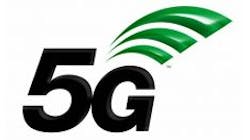Sub-6 GHz 5G Updates (5G NR)
Though there are high hopes for Millimeter-wave 5G solutions to solve all of our bandwidth woes, there will likely still be a couple, to several, years before large scale deployments of mm-Wave 5G occur. For the time being, wireless service providers are focusing on developing hardware and prototyping the new Sub-6 GHz 5G NR bands. These new bands cover 3300 MHz to 4200 MHz (n77), 3300 MHz to 3800 MHz (n78), and 4400 MHz to 5000 MHz (n79), and allow for up to 100 MHz of bandwidth. Due to varying regulation, each country has slightly different spectrum segments allowable for sub-6 GHz 5G NR. The most common frequency ranges are within 3400 MHz to 3800 MHz, and only a few countries currently have spectrum available beyond 3800 MHz. The US, for example, has two bands, a unlicensed/shared band from 3550 MHz to 3700 MHz and 3700 MHz to 4200 MHz available for sub-6 GHz 5G NR. Though not necessarily related, there have been efforts made in many countries to open up addition spectrum in the 600 MHz and 700 MHz frequencies for wireless telecommunications (TV white space spectrum), in the US this has emerged as two 35 MHz licensed spectrum segments and 14 MHz of unlicensed spectrum that may also be used in handsets and fixed wireless equipment alongside Sub-6 GHz 5G NR bands.
Several major modem chip suppliers have developed sub-6 GHz 5G NR modems, some even capable of facilitating the non-standalone mm-Wave 5G communications. As beamforming and beamsteering technologies aren’t needed for sub-6 GHz technology to overcome high RF path loss and atmospheric attenuation experienced by mm-Wave frequencies, the main focus for providing enhanced performance for sub-6 GHz 5G NR relies on massive MIMO and carrier aggregation technologies. These two capabilities require a large number of antenna elements with distinct RF pathways, and the ability for the RF front-ends (RFEs) and modems to operate, simultaneously, with several legacy and new 5G NR frequency bands. In order to implement multi-user MIMO (Mu-MIMO) and carrier aggregation, many modem chips are necessary along with a substantial amount of RF routing. Moreover, the use of such high-speed modems also leads to the use of high-speed digital interfaces that run at several Gbps. Though much of these new sub-6 GHz modem/radio/antennas would ideally be integrated, the sheer volume of RF/high-speed ports and pathways creates a substantial RF interconnect challenge during prototyping, testing, production, and even troubleshooting/maintenance.
